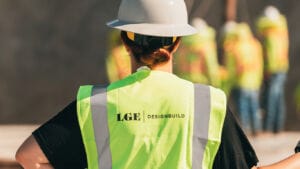Phoenix is busy, permits move fast, and the field has zero patience for paperwork that isn’t tied to what happens at the laydown yard. This checklist turns city code requirements and county air-quality rules into practical, “do this next” steps so GCs and subs can keep inspections clean and schedules honest. The focus is not theory—it’s the day-to-day habits that get you to green tags the first time.
What changed—and why it matters for precon
Phoenix updates its building code set on a cadence that mirrors the model codes, then amends them for local conditions. The city’s Codes and Ordinances resource collects the operative titles in one place, which is the cleanest starting point when you’re scoping bid assumptions, writing a compliance plan, or reconciling plan-check comments with field conditions. If you’re building out 2025 schedules, the local Phoenix building code adoption recap is a quick way to sanity-check timelines and transition windows so you don’t redraw details that could pass under the former standard.
The adoption date determines which energy, fire, and accessibility provisions your submittal must meet. That ripples into shop drawings, delegated engineering, and even procurement—think door hardware, rated assemblies, and lighting controls that hit revised performance thresholds. The earlier you lock which version applies, the fewer “change for compliance” RFIs land after procurement starts.
Permits, plans, and the Phoenix jobsite reality
On paper, it’s drawings, submittals, and inspections. In the field, it’s chain-of-custody for decisions: who approved the firestopping detail, who signed the pre-pour, who carries the dust plan. Treat every precon meeting as evidence prep. The goal is a single place—digital or a hard binder—where your permit set, inspection logs, RFIs, and special-inspection reports live with the city’s current code references. Linking the kickoff note back to the city’s Codes and Ordinances page seems small, but it stops “which version?” arguments before they start and gives inspectors confidence that the team is speaking the same language.
A simple discipline pays off: stamp every field change with the code section it touches, attach the architect/engineer approval, and park it next to the relevant sheet in your control set. When the inspector asks why a rated joint looks different than the original detail, you can point to the revision, the approval, and the section that drove the change. That ends most debates in under a minute.
Rule 310 is not optional: design your dust play early
Maricopa County’s Dust Sources, Control, and Training page outlines when permits and plans are required for earthmoving, demolition, and similar work. It’s enforced, and inspectors expect more than a water-truck cameo. Good practice is boring on purpose: document your dust-control plan, permit status, water source, and who the coordinator is; then keep those logs with your daily reports. When a site is five acres or larger, coordinators and backups must be designated and trained; even on smaller sites, basic dust-control training for key roles shortens conversations during inspections.
On infill sites with tight neighbors, lay down gravel at access points before the first cut, pre-stage a second water source for windy days, and sketch a quick internal flow map that shows haul routes and stockpile locations. If you’re phasing utilities and paving, treat each phase like its own dust plan with photos, dates, and who owns what. Inspectors appreciate specifics; “we’ll water as needed” doesn’t fly when winds kick up.
LOCAL NEWS: 10 things you may not know are manufactured in Arizona
INDUSTRY INSIGHTS: Want more news like this? Get our free newsletter here
Case study: how a megaproject mindset helps small sites
Major industrial campuses have to run an inspection-ready playbook every day or they drown in rework. The approach used around TSMC’s industrial campus is a good mental model for Phoenix infill jobs: tight document control, predictable inspection cadence, and zero ambiguity about who calls what in. Mimic the discipline at any scale. Hold a micro-precon before each inspection milestone, walk the inspector’s path on the plans, and pre-tag anything that has a known correction risk. Where scope is delegated—rigging plans, shoring, or fire-stopping mockups—bring the delegated engineer into that walk so approvals are clean the first time.
Crew readiness: training that actually moves inspections
Most delays aren’t about the rule; they’re about proof. Keep copies of task-specific briefings, toolbox talks, and any credentials your client expects to see. Recognized coursework helps, and it’s easy to reference construction safety certification when you’re showing what “competent” looks like across mixed crews—especially on packages with elevated fall, lift, or hot-work exposure. Make competency visible. Print the roster for the day’s high-risk task with signatures from the pre-task plan, clip it to the permit board, and take a photo at start of shift. When the inspector asks who’s qualified to run the lift or perform the confined-space entry, you’re not searching through three clipboards.
Heat is not a footnote in Phoenix. During peak months, align hydration, shade, and acclimatization plans with your schedules so foremen have a common script for red-flag days rather than winging it. Workbacks help: if a slab pour requires four hours of continuous finish work, plan your breaks, shade, and even water staging like you plan your ready-mix trucks. A coherent heat plan protects crews and makes it easier to defend schedule decisions when owners ask why you shifted a pour to pre-dawn.
Special inspections and third-party coordination
Don’t treat special inspections as a separate universe. Fold them into your critical-path plan. Create a standing five-minute huddle between your superintendent, the special-inspection agency, and the trade foreman before each milestone—rebar placement, structural steel bolting, masonry grout, fireproofing thickness checks. Confirm criteria, access, and withdrawal times. If your delegated engineer has an observation to complete, pair it with the special inspection so the inspector sees one tidy package: photos, measurements, sign-offs, and any corrective work documented with dates.
Fire and life-safety systems deserve the same rigor. Before rough inspection, assemble a quick tracker for penetrations in rated assemblies, mapping locations to system types and submittal approvals. If firestopping is multi-trade, agree on who owns which penetration and how you’ll document them. When final inspection comes, you’ll thank yourself.
Utilities, street work, and cranes—code adjacent, schedule critical
Urban infill in Phoenix usually means utility locates, traffic control, and lift plans are part of life. Treat them as code-adjacent: the minute you set your mobilization date, freeze responsibility for traffic-control diagrams and street-closure lead times; pair that with lift certifications, rigging plans, and the specific section of the city spec you’re building against. For mid-rise jobs, draft the crane plan early enough to loop in adjacent property owners if swinging over air rights is in play. Tidy coordination has a way of creating goodwill; inspectors can tell when a team is running ahead of problems.
Utility conflicts are where weeks disappear. If the record drawings are fuzzy, budget half a day for potholing and ground-truthing before you finalize your grading plan. Once you know where the conflicts actually are, update the control set and call out the change with the code reference that requires separation or protection. The fastest inspection is the one that never has to wrestle with “as-found” surprises.
Use case: a realistic first 72 hours on a Phoenix site
Picture a one-acre infill site breaking ground on Monday. Day one begins with a short briefing in front of the permit board. The superintendent points to the Rule 310 permit, the dust-control plan, and the roster of trained coordinators, all of which tie back to the county’s Dust Control Training requirements. Gravel goes down at the gate, the water truck is staged with a backup hydrant connection, and haul routes are marked with simple arrows on a laminated aerial. By midday, the first round of photos—access, stockpiles, silt fencing—are logged and pinned to the plan sheet.
Day two is for utilities. The locate tickets are taped next to the civil sheet with colored flags matching the drawing legend. Potholing verifies a shallow telecom line; the grading plan is updated, the change clouded, and the superintendent emails the revised sheet to the inspector with a one-line note and the separation requirement cited from the code. No drama, no delay.
Day three starts early for heat. Crews rotate through shade every hour, hydration is staged at both ends of the cut, and the pre-task plan lists who breaks when. The foreman snaps a photo of the roster and the shade setup at 6:15 a.m. The inspector stops by at nine, glances at the board, and spends more time chatting than correcting. That’s what “inspection-ready” looks like in practice.
Teaching the muscle memory: why training culture matters
Program partners learn this discipline early—see the region’s advanced manufacturing training facilities coverage for how education and industry standardize documentation from the outset. The trick is to make the jobsite’s administrative layer almost invisible. Crew leads should be able to find the latest approved plan in seconds, know who is authorized to sign off a correction, and understand how to flag a change that touches fire, structural, or accessibility scope.
If your project involves public interface—streets, sidewalks, or nearby businesses—teach everyone the one-minute version of your plan. The more coherent your story sounds to a passerby or a city rep, the smoother your interactions with inspectors tend to be.
Closeout without chaos: threading approvals to TCO
Closeout in Phoenix rewards teams that built a narrative from day one. Start a running log of approvals the week you mobilize, not the week you punchlist. When a late design tweak changes a rated door hardware set, the log should capture the revision, the approval, and a snapshot of the installed condition. When the time comes to schedule final inspections, you can present a simple, chronological story: here’s what was approved, here’s when we installed it, here’s the proof we checked it, and here’s the as-built that matches.
Owners love this because it reduces the gray area that leads to extended punch. Inspectors appreciate it because they’re not being asked to reconstruct six months of decisions. Your team loves it because it shortens the “hunt” time and puts everyone back on production.
Bottom line: a contractor safety checklist that fits Phoenix
Make the city’s code hub your baseline, build Phoenix building codes considerations into earthwork from day one using Maricopa County’s Dust Sources, Control, and Training as your procedural compass, show your crew’s training the same way you show your permits with construction safety certification as recognizable proof, and keep approvals tied to the drawings they modify. Borrow a megaproject’s discipline even on smaller jobs. If you do that, the checklist stops being a binder and starts being time back on your schedule—exactly what your client hired you to deliver.




